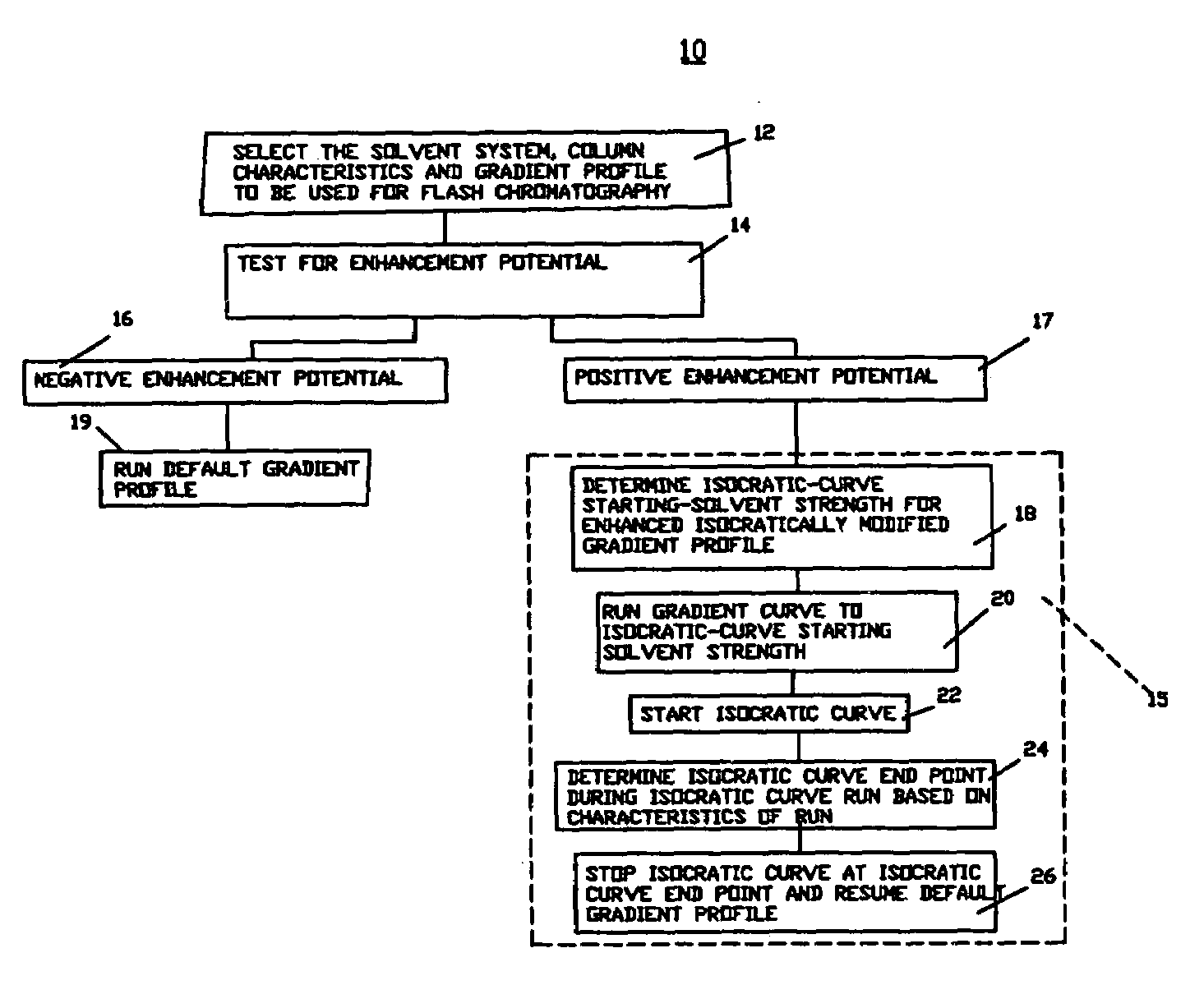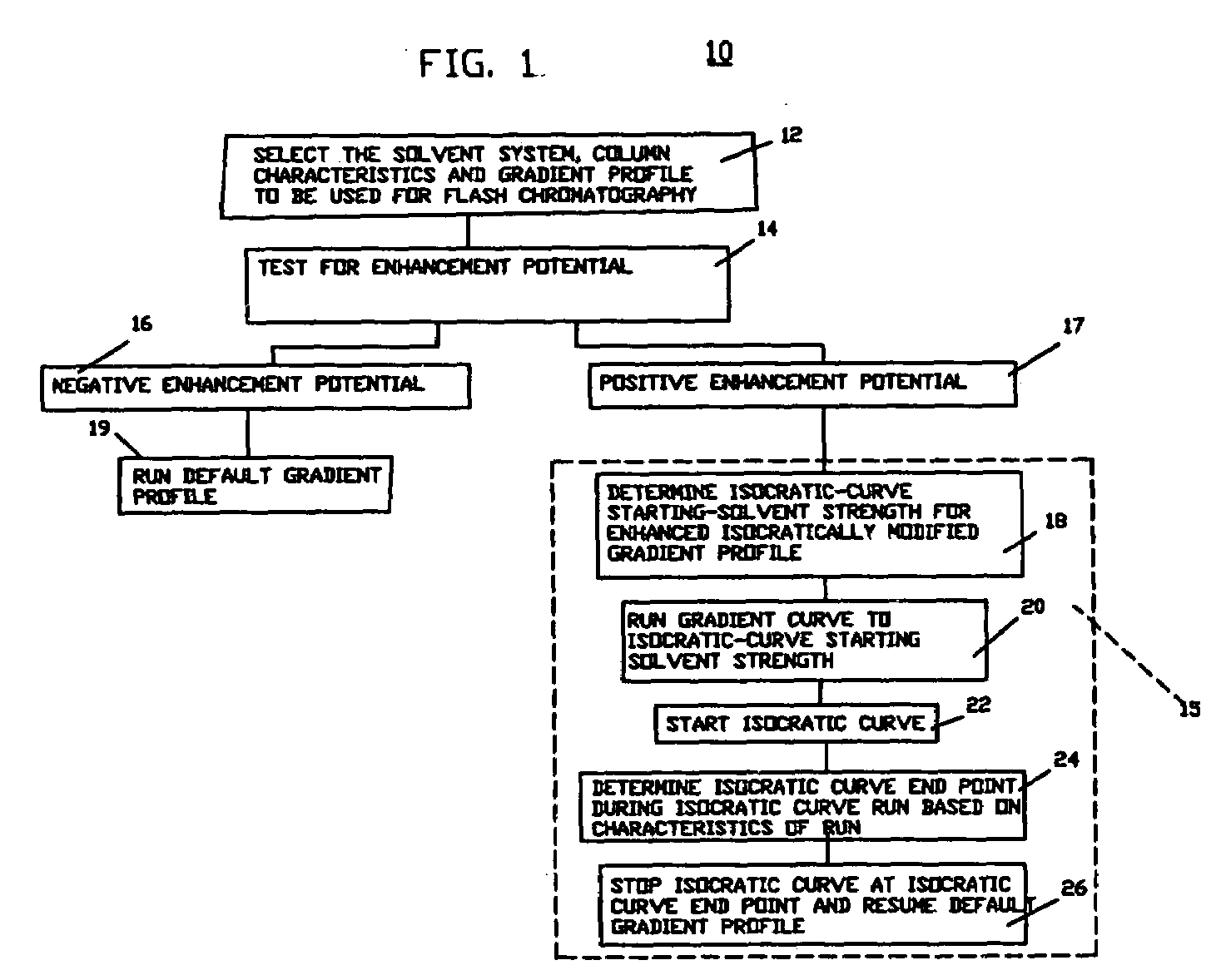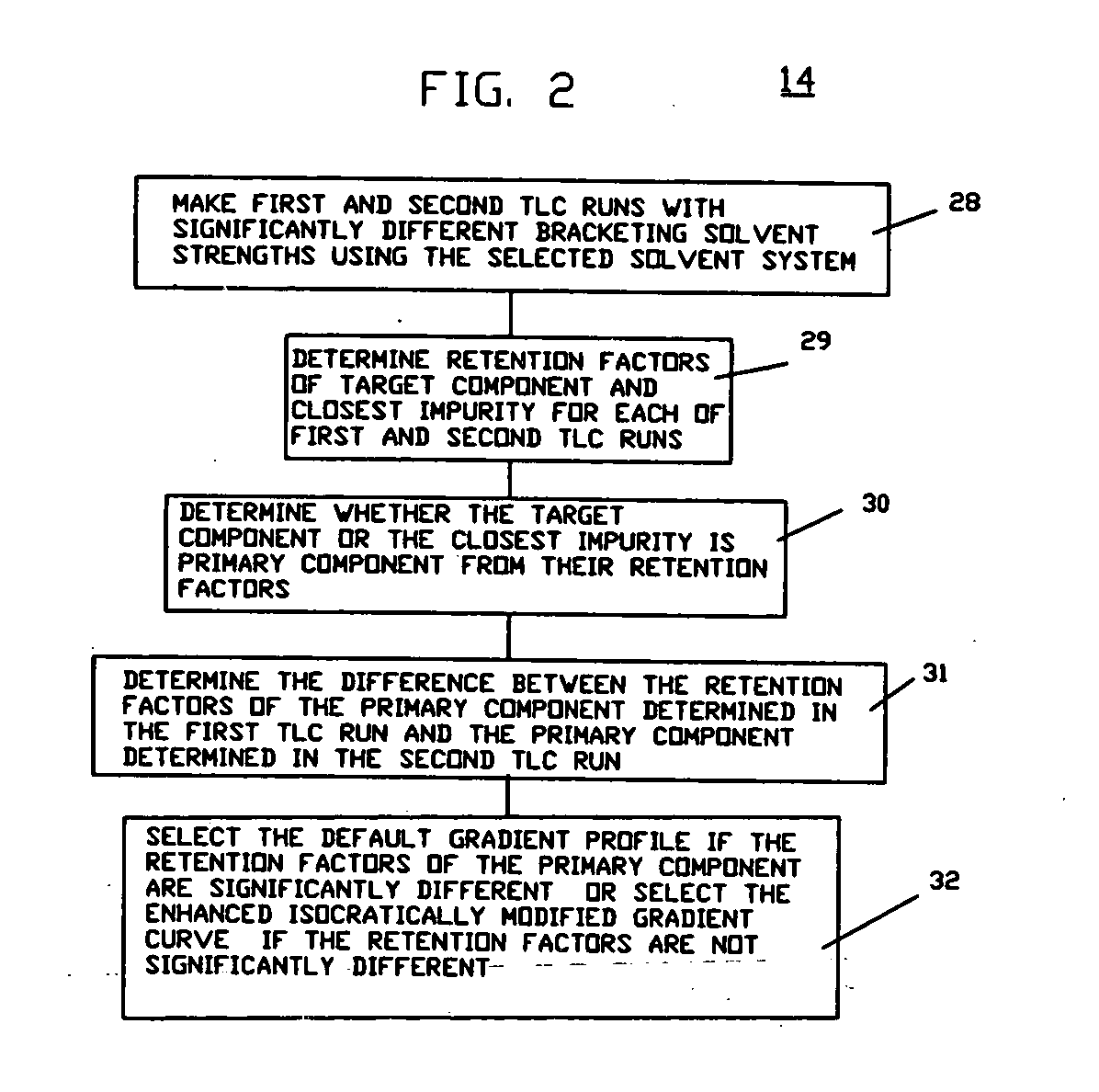Gradient liquid chromatography enhancement system
a liquid chromatography and enhancement system technology, applied in the field of liquid chromatography, can solve the problems of unnecessarily waste of time and solvent, significantly affecting the effect of the program, and affecting the identification, separation or purification of the desired material, so as to save time and solvent, reduce the time, and improve the effect of separation and purification
- Summary
- Abstract
- Description
- Claims
- Application Information
AI Technical Summary
Benefits of technology
Problems solved by technology
Method used
Image
Examples
Embodiment Construction
[0033]In FIG. 1, there is shown a flow diagram of a process 10 for purifying a component using flash chromatography in accordance with an embodiment of the invention having the step 12 of selecting the solvent system, column characteristics and gradient profile to be used for flash chromatography, the step 14 of determining if an enhanced isocratically modified gradient profile is to be used and the alternate combinations of steps 16 and 19 if the test for enhancement potential is negative and the steps 17 and 15 if the test for enhancement potential is positive. If the test for enhancement potential is negative as shown at 16, the standard gradient profile is run as shown at 19. If the test for enhancement potential is positive as shown at 17, an enhanced modified gradient profile is used as shown at 15.
[0034]The step 15 of running an enhanced isocratically modified gradient profile includes the substeps 18 of determining the enhancement isocratic curve starting solvent strength, t...
PUM
 Login to View More
Login to View More Abstract
Description
Claims
Application Information
 Login to View More
Login to View More - R&D
- Intellectual Property
- Life Sciences
- Materials
- Tech Scout
- Unparalleled Data Quality
- Higher Quality Content
- 60% Fewer Hallucinations
Browse by: Latest US Patents, China's latest patents, Technical Efficacy Thesaurus, Application Domain, Technology Topic, Popular Technical Reports.
© 2025 PatSnap. All rights reserved.Legal|Privacy policy|Modern Slavery Act Transparency Statement|Sitemap|About US| Contact US: help@patsnap.com



